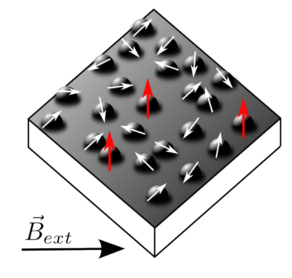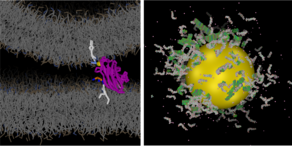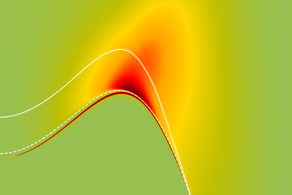Professorship for Theoretical Physics: Soft Matter Theory
Welcome to our website
We are glad that you have found your way to us!
Here we, the Kierfeld Group, introduce ourselves. You can find information about our working group, research and teaching activities.
The research group deals with soft matter theory and biological physics under the direction of Prof. Dr. Jan Kierfeld. We study statistical physics, mechanics and hydrodynamics of soft and biological matter using analytical and numerical methods. In the soft matter field, the main interests are polymer physics, rheology of elastic materials such as capsules or shells, active self-propelled systems, and micro-floats. We are also actively developing new Monte Carlo simulation techniques (event-chain Monte Carlo) and new applications of machine learning in soft matter physics. In biological physics, cytoskeletal filaments (actin and microtubules) are the main topic. They convert chemical energy (ATP or GTP) during their polymerization to generate forces and motion at the cellular level. We study the physics of single filaments to bundles and networks of many filaments, and from equilibrium fluctuation to chemical drive by polymerization or molecular motors.
Research Topics
Soft matter, Biological physics,
Statistical physics of fluctuating systems at the interface of condensed/soft matter physics, materials science, chemical physics, and biology:
- Semiflexible polymers and biological filaments
- Polymerization kinetics and force generation in the cytoskeleton
- Coupling of hydrolysis and polymerization
- Chemomechanical models of microtubule dynamics
- Microtubule dynamics in the mitotic spindle
- Unbinding, desorption, adsorption
- Filament bundles and networks
- Localization in random potentials
- Active filament systems, gliding assays, interaction with molecular motors
- Elastic shells, capsules, and polymer networks
- Modelling and shape analysis of elastic capsules
- Machine learning in shape analysis
- Elastic instabilities: buckling and wrinkling
- Elastic properties of semiflexible polymer networks
- Capsules as microswimmers
- Novel simulation algorithms (event-chain Monte Carlo)
- Soft matter applications: polymers, colloids, liquid crystals
- Wetting morphologies
- Crack propagation
- Surface growth, self-assembly
- Vortex matter in type-II/high-Tc superconductors
- Topological defects, plasticity







